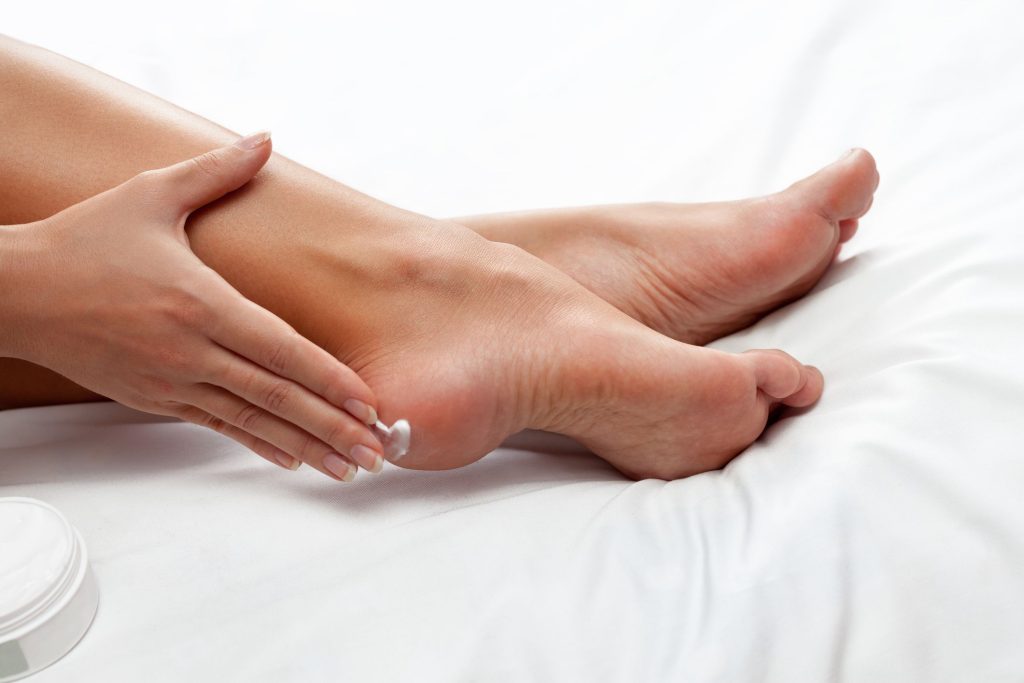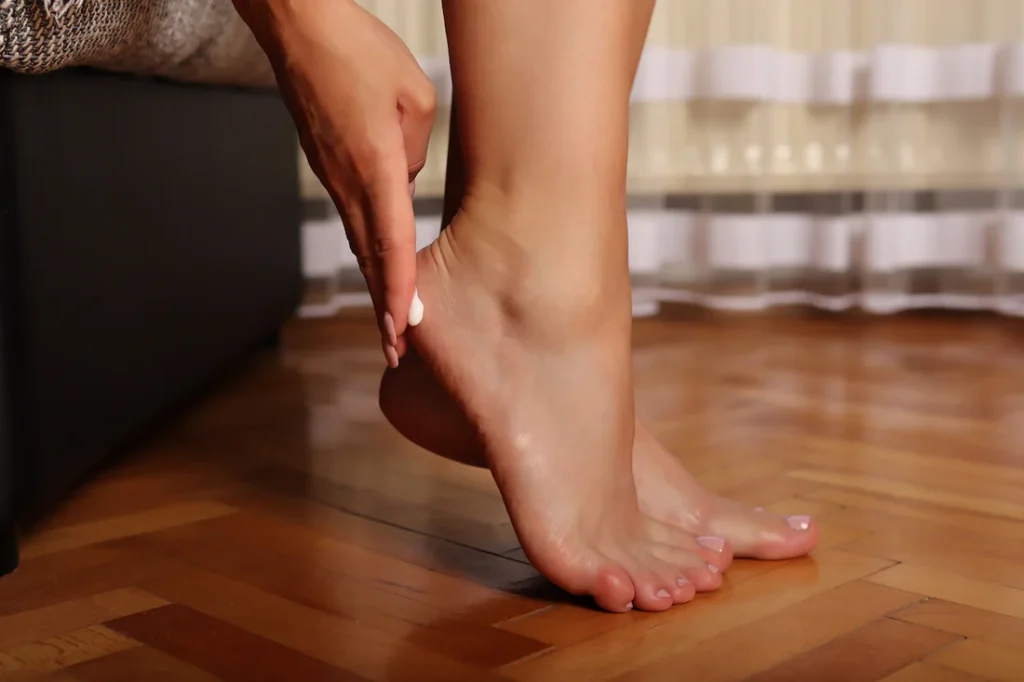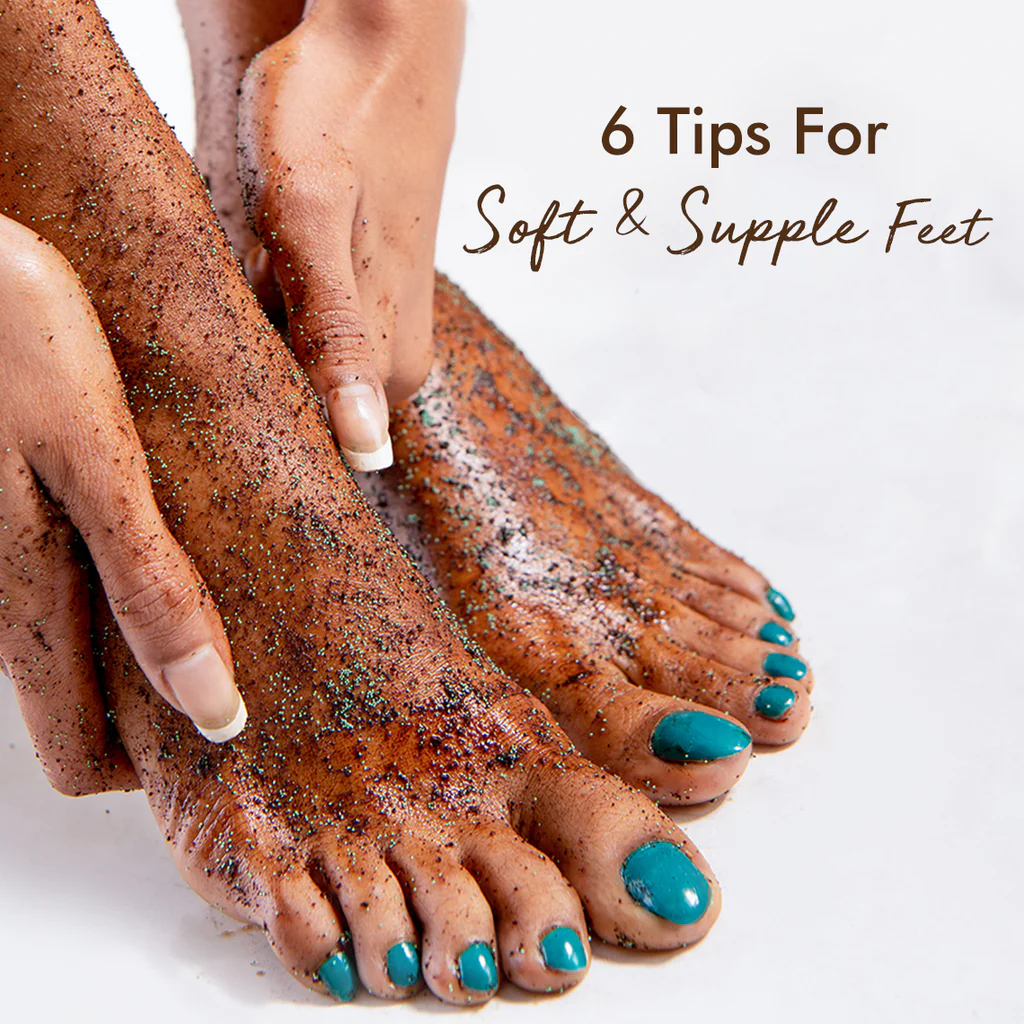How to Get Baby Soft Feet: The Ultimate Scrubbing Guide for Smooth Soles (2025)
Discover how to achieve baby soft feet with consistent scrubbing and the right techniques. Transform rough, calloused skin into smooth, pampered feet at home. Learn more!
Who doesn’t dream of having silky smooth feet that feel like they’ve just stepped out of a spa? I’ve discovered that achieving baby soft feet isn’t just a luxury reserved for professional pedicures. With the right techniques and a consistent routine, you can transform your rough, calloused feet into a pampering paradise right at home.
Understanding Foot Skin and Common Issues
Structure of Foot Skin
Foot skin is uniquely designed to withstand constant pressure and friction. The skin on the soles of feet is the thickest on the body, reaching up to 1.5 mm in some areas. This thickness provides crucial protection against daily wear and tear. Like other skin, foot skin consists of multiple layers: the epidermis (outermost layer), dermis, and hypodermis.
The epidermis on feet is particularly thick, acting as a robust barrier against external stressors. This specialized structure allows our feet to endure the rigors of walking, running, and standing for extended periods.
Common Foot Skin Problems
Dry skin is a prevalent issue affecting foot health and appearance. It often results from lack of moisture, harsh soaps, or environmental factors, leading to cracked heels and rough patches. Calluses and corns are another common problem, forming as a protective response to repeated friction or pressure. These thickened areas of skin can become painful if left untreated. Fungal infections, such as athlete’s foot, thrive in the warm, moist environment of shoes and can cause itching, peeling, and redness. Also, excessive sweating (hyperhidrosis) can lead to skin maceration, making feet more susceptible to infections and odor.
Preparing for Foot Care
Proper preparation is crucial for achieving baby soft feet through regular scrubbing. Here’s what you need to know before starting your foot care routine.
Tools and Materials Needed
To effectively scrub your feet, gather these essential items:
- Pumice stone: This natural volcanic rock gently removes dead skin and calluses.
- Foot file: A coarse file designed specifically for feet helps smooth rough patches.
- Exfoliating scrub: Choose a scrub with natural ingredients like sugar or salt for additional exfoliation.
- Moisturizing cream: Apply after scrubbing to lock in softness.
- Soft towel: Use to dry feet gently after treatment.
- Basin or tub: For soaking your feet before scrubbing.
- Epsom salt: Add to warm water for a soothing foot soak.
Having these tools on hand ensures you’re well-equipped for a thorough foot care routine.
Creating the Right Environment
Set up a comfortable space for your foot care routine:
- Choose a quiet, well-lit area with a comfortable chair or bench.
- Ensure the room temperature is warm to prevent chills during treatment.
- Place a soft, absorbent mat on the floor to catch water and prevent slipping.
- Prepare a large basin or tub with warm water for soaking.
- Add Epsom salt or a few drops of essential oils to the water for a spa-like experience.
- Keep all your tools and products within easy reach.
- Play soothing music or use aromatherapy to enhance relaxation.
Creating a calming environment transforms your foot care routine into a pampering ritual.

Soaking Your Feet
Soaking your feet is a crucial step in achieving baby-soft skin. This process softens the skin, making it more receptive to exfoliation and moisturization.
Warm Water Soak
I recommend starting with a warm water soak to prepare your feet for exfoliation. Fill a basin or tub with comfortably warm water, ensuring it’s not too hot to avoid skin irritation. Soak your feet for 15-20 minutes to soften the skin and open up pores. This method is particularly effective when used before exfoliation or after applying a foot peel product. The warmth helps to increase blood circulation, promoting healthier skin and reducing foot fatigue. For an enhanced experience, add a few drops of essential oils like lavender or peppermint to create a spa-like atmosphere and provide aromatherapy benefits.
Epsom Salt and Vinegar Soaks
Epsom salt and vinegar soaks offer additional benefits for achieving soft feet. I suggest adding 1/2 cup of Epsom salt to warm water for a mineral-rich soak that helps reduce inflammation and soften skin. The magnesium in Epsom salt can also help relieve muscle tension. For a vinegar soak, mix equal parts warm water and apple cider vinegar. The acidity in vinegar helps to balance the skin’s pH and combat foot odor. Both these soaks can be done for 15-20 minutes, 1-2 times a week. After soaking, gently pat your feet dry and follow up with exfoliation and moisturization for best results.
Exfoliation Techniques
Effective exfoliation is key to achieving baby-soft feet. Here are three proven techniques to remove dead skin cells and reveal smoother, softer skin.
Using a Pumice Stone
A pumice stone is an essential tool for foot exfoliation. I use it after soaking my feet when the skin is softest. Here’s how to use it effectively:
- Wet the pumice stone with warm water.
- Gently rub the stone in circular motions on rough areas like heels and balls of feet.
- Focus on one small area at a time, spending 2-3 minutes per section.
- Rinse feet and stone frequently during the process.
- Pat feet dry and apply moisturizer immediately after.
Remember to be gentle to avoid irritation or raw skin. Consistency is key – use the pumice stone 2-3 times a week for best results.
Applying Foot Scrubs
Foot scrubs offer a more intensive exfoliation experience. I prefer scrubs with natural exfoliants like sugar or salt combined with moisturizing ingredients. Here’s how to apply:
- Dampen feet with warm water.
- Apply a quarter-sized amount of scrub to each foot.
- Massage the scrub in circular motions, focusing on rough areas.
- Pay extra attention to heels, balls of feet, and around toes.
- Rinse thoroughly with warm water.
- Follow up with a thick, hydrating foot cream.
For optimal results, use a foot scrub once a week, alternating with pumice stone treatments.

Chemical Exfoliation Methods
Chemical exfoliants offer a hands-off approach to achieving soft feet. These products use alpha-hydroxy acids (AHAs) and beta-hydroxy acids (BHAs) to dissolve dead skin cells. Here’s how to use them:
- Clean and dry feet thoroughly.
- Apply the chemical exfoliant according to product instructions.
- Leave on for the recommended time, usually 1-2 hours.
- Rinse feet thoroughly and pat dry.
- Apply a moisturizer to lock in hydration.
Popular options include foot peels like Baby Foot, which contain glycolic acid, lactic acid, and salicylic acid. Use these treatments monthly or as directed for consistently smooth feet.
Moisturizing and Hydrating
Choosing the Right Products
Select products specifically formulated for foot care to achieve optimal results. Look for moisturizers containing hydrating ingredients like shea butter, coconut oil, or vitamin E. These components penetrate deep into the skin, providing intense hydration. For severely dry or cracked feet, consider using a specialized foot peel containing glycolic acid, lactic acid, and salicylic acid. These active ingredients effectively remove dead skin layers, revealing softer skin underneath. Opt for fragrance-free options if you have sensitive skin to avoid potential irritation.
Proper Application Techniques
Apply moisturizer to clean, slightly damp feet to lock in hydration. Massage the product thoroughly into the skin, paying extra attention to rough areas like heels and the balls of your feet. Use circular motions to improve absorption and stimulate circulation. For best results, apply moisturizer daily, especially after bathing or showering. Consider using a thicker, more occlusive cream at night and wearing cotton socks to enhance absorption while you sleep. If using a foot peel, follow the product instructions carefully and soak your feet in warm water for 10-15 minutes afterward to aid the peeling process.
Maintaining Baby Soft Feet
Regular Care Routine
To maintain baby soft feet, establish a consistent care routine. Exfoliate regularly using a foot peel like Baby Foot, which contains alpha-hydroxy and beta-hydroxy acids. Apply the booties for one hour, then wash your feet. The peeling process typically starts 5-7 days later, revealing softer skin. Daily scrubbing with a pumice stone or foot file gently removes dead skin cells, especially after bathing when the skin is soft.
Focus on areas like heels and toes. For more intense exfoliation, use a foot scrub or exfoliating foot mask once or twice a week. Moisturize daily with a rich foot cream or balm containing shea butter, coconut oil, or vitamin E to keep the skin hydrated and soft.
Protective Measures
To protect your newly softened feet, carry out preventive measures. Wear comfortable, well-fitting shoes that allow your feet to breathe and avoid excessive pressure on exact areas. Use moisture-wicking socks to keep feet dry and prevent fungal growth. When walking on rough surfaces or in public areas like pools or locker rooms, wear protective footwear to prevent cuts, scrapes, and infections.
Regularly trim toenails straight across to prevent ingrown nails. Stay hydrated by drinking plenty of water, as this helps maintain overall skin health, including your feet. Finally, protect your feet from sun damage by applying sunscreen when exposed to direct sunlight, especially during summer months or beach vacations.
Troubleshooting Stubborn Areas
Dealing with Calluses and Corns
Calluses and corns require targeted treatment for effective removal. I recommend soaking feet in warm water for 15 minutes to soften the skin. Then, use a pumice stone or foot file designed for these areas, gently rubbing in circular motions. Focus on the thickened skin without applying excessive pressure to avoid irritation.
For stubborn calluses, apply a specialized callus remover cream containing salicylic acid, leaving it on for the recommended time before scrubbing. After exfoliation, rinse feet thoroughly and apply a moisturizer to keep the skin hydrated. Repeat this process 2-3 times a week for optimal results.
Addressing Cracked Heels
Cracked heels demand intensive care to restore smoothness. I suggest starting with a 20-minute soak in warm water mixed with Epsom salt to soften the skin. After patting feet dry, apply a thick, urea-based heel balm or petroleum jelly to lock in moisture. For deep cracks, use a liquid bandage product to seal the fissures and promote healing.
Wear cotton socks overnight to enhance absorption. In the morning, gently file away any loosened dead skin with a foot file. Consistency is key – repeat this routine daily until heels improve, then maintain with regular moisturizing and weekly exfoliation to prevent recurrence.
Tips for Long-Term Foot Health
Achieving baby soft feet requires consistent care and attention to long-term foot health. Here are some essential tips to maintain healthy, soft feet:
- Moisturize daily: Apply a rich foot cream or balm every day, focusing on dry areas like heels and soles. Use products containing shea butter, coconut oil, or vitamin E for deep hydration.
- Exfoliate regularly: Use a pumice stone or foot file 2-3 times a week to remove dead skin cells. For deeper exfoliation, consider using a foot peel once a month.
- Protect your feet: Wear comfortable, well-fitting shoes to prevent blisters and calluses. Use moisture-wicking socks to keep feet dry and reduce friction.
- Practice good hygiene: Wash your feet daily with soap and warm water. Dry thoroughly, especially between toes, to prevent fungal infections.
- Trim toenails properly: Cut toenails straight across to prevent ingrown nails. Use a nail file to smooth any rough edges.
- Stay hydrated: Drink plenty of water to keep your skin, including foot skin, hydrated from the inside out.
- Use sunscreen: Apply sunscreen to your feet when exposing them to sunlight to prevent sun damage and premature aging.
- Rotate your shoes: Allow shoes to dry completely between wears to prevent bacterial growth and foot odor.
- Avoid walking barefoot: Wear flip-flops or sandals in public areas like locker rooms or pools to protect against infections.
- Massage your feet: Regularly massage your feet to improve circulation and promote overall foot health.
By incorporating these tips into your routine, you can maintain soft, healthy feet for the long term. Remember, consistency is key in foot care, and small daily efforts can lead to important improvements in foot health and appearance.
Conclusion
Achieving baby-soft feet isn’t just a dream – it’s a reality within your reach. By following the steps I’ve outlined you’ll transform your feet into silky-smooth wonders. Remember regular care is key. Soak exfoliate and moisturize consistently for best results. Don’t forget to protect your feet from harm and address any stubborn issues promptly. With dedication and the right techniques you’ll soon be showing off your beautifully soft feet with pride. So pamper those hardworking feet – they deserve it!

